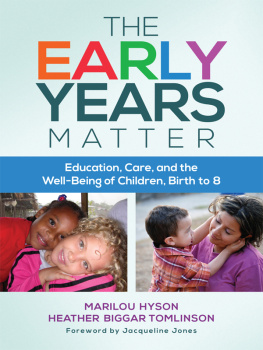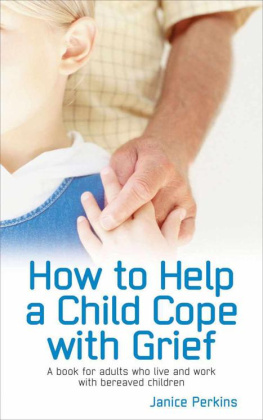Thank you for downloading this Scribner eBook.
Join our mailing list and get updates on new releases, deals, bonus content and other great books from Scribner and Simon & Schuster.
C LICK H ERE T O S IGN U P
or visit us online to sign up at
eBookNews.SimonandSchuster.com
We hope you enjoyed reading this Scribner eBook.
Join our mailing list and get updates on new releases, deals, bonus content and other great books from Scribner and Simon & Schuster.
C LICK H ERE T O S IGN U P
or visit us online to sign up at
eBookNews.SimonandSchuster.com

SCRIBNER
A Division of Simon & Schuster, Inc.
1230 Avenue of the Americas
New York, NY 10020
www.SimonandSchuster.com
Copyright 1959 by Selma H. Fraiberg
Copyright renewed 1987 by Louis Fraiberg and Lisa Fraiberg
Introduction copyright 2008 by T. Berry Brazelton
All rights reserved, including the right to reproduce this book or portions thereof in any form whatsoever.
For information, address Scribner Subsidiary Rights Department, 1230 Avenue of the Americas, New York, NY 10020.
First Scribner trade paperback edition February 2008
S CRIBNER and design are trademarks of MacMillan Library Reference USA, Inc., used under license by Simon & Schuster, the publisher of this work.
For information about special discounts for bulk purchases, please contact Simon & Schuster Special Sales: 1-800-456-6798 or
Cover design by Alejandro Largo
Cover photograph by John Dolan
Library of Congress Control Number: 59-6073
ISBN-13: 978-0-684-16849-4
ISBN-10: 0-684-16849-9
ISBN-15: 978-0-684-82550-2
ISBN-10: 0-684-82550-3
ISBN-13: 978-1-501-12282-8 (eBook)
Selections from the following sections were first published in Parents Magazine: The Missionaries Arrive (under the title Taming the Toddler), Travel and Perspectives (under the title Dont Cage That Crawler), and Laughing Tiger.
copyright 1958, 1959 by Selma H. Fraiberg.
To My Husband and My Daughter
CONTENTS
Introduction to The Magic Years
T. BERRY BRAZELTON, M.D.
This book, now half a decade old, is a rare treat. I read it many years ago and it thrilled me then. Now, reading it again, it is absolutely wonderful. Not only is Selma Fraiberg an amazing storyteller but her writing is rare and insightful. As she talks about childrens early years, she makes them come alive and become magical because she leads us into a childs imagination, into a world that all of us can begin to remember in ourselves. She carries us with her as we read about her children and how they tell her their innermost thoughts and dreams. We all share each childs fears, his reasons for lying about a mistake he made, and begin to understand why we must look into the closet to find a little girls witches.
I had the great fortune to know Selma as she developed her way of thinking. First, I knew her as a fellow practitioner who held me spellbound as she told her stories. Then, later, as a grandmother, for she and her daughter brought their baby to me. All three of usmother, grandmother, and pediatricianwatched this lovely baby together. Every movement took on meaning. Every response contributed to our shared delight. As the baby grew into her second year, every step along the way was our window into a world we had left physically, but which we could reenter by observing this small creatures development. We each became obsessed with her as if we were all new parents. What an experience to share Selmas insights and observations, to have the opportunity to see what her grandmothers point of view meant to her daughter. Was this baby overanalyzed? Of course. Dont we always interpret our childrens development with our own experiences from our past, what Selma calls ghosts from our own nursery? These ghosts tell us what to make of our childrens behavior and add a magical layer to the meaning the child may be making of his or her own behavior.
Suppose our meanings are wrong or are too powerful and overwhelm the babys own ability to understand the developmental step he has just made. Can we be objective and sensitive to the importance of the process of learning independently? Of his becoming aware of himself as an autonomous power of his own in digesting and adapting to each new step in development? This book helps us recognize the childs needs. It will help eager parents pull back and reevaluate their rolesas protectors rather than as overprotectors.
For example, Selma documents one four-year-old childs need for the fears that balance her burgeoning aggressive feelings. Can we protect her from these fears? Of course not. They are part of her adaptation to an important new step in her developmentof her awareness of (1) her new sense of power and influence on her world, (2) her surging feelings of wanting to dominate that world in order to recognize that power in herself, (3) her adjustment of her controls over that new power so it can be felt and used when necessary, but so it wont bring down the world that she is trying to conquer. That world is, of course, herself. With these brilliant mechanisms, she is able to learn the most important attributes: self-awareness and resilience in order to surmount overwhelming experiences. What important years these are!
As parents, we all want to support our small children as they conquer each stage in development. We are likely to overstep and to overprotect. We are bound to make mistake after mistake. This has led me to the conviction that learning to parent must be in large part attributed to learning from our mistakes. Our successes are absorbed and rarely even recognized, but our mistakes are magnified by the child and by ourselves, and are played out for us over and over by the childs deviant behavior. Each of us feels a failure daily. Selmas wonderful stories, wisdom, and advice give us back the courage and recognition that all is not lost. A childs buoyancy and his ability to play out these traumatic mistakes and to use his magic dreams to restore his world gives each of us parents a new kind of hope. The child can become resilient. Can we?
Selma leads us into the power and pleasure of early attachment between parent and baby during infancy. This becomes the first and most necessary building block. Then each stage of the first few years is seen through the window of a story. For example, the way a ten-month-old examines a chair, takes it apart and puts it back together in his mind before he dares to pull himself up on it. Selmas observations give us the gift of daring to ascribe meaning to a childs behavior as he develops. As we come to understand the childs meaning and way of thinking, it is not difficult to become his partner in feeding, in toilet-training, and in discipline as teaching rather than punishment. We can think as the child doesand our own contributions are no longer just topdown. You do this because I say so becomes lets share our words and our ideas. We can join them and say, What do we want to achieve?
We have the unique opportunity to keep up with the childs imaginary dreams by reading Selmas book. She makes each stage of emotional and mental development come alive! Every parent will feel that theyve reentered and gained invaluable insight into the childs world and that they can relive it with their own child. Isnt that magic?
PREFACE
The magic years are the years of early childhood. By magic I do not mean that the child lives in an enchanted world where all the deepest longings are satisfied. It is only in the minds of adults that childhood is a paradise, a time of innocence and serene joy. The memory of a Golden Age is a delusion for, ironically, none of us remembers this time at all. At best we carry with us a few dusty memories, a handful of blurred and distorted pictures which often cannot even tell us why they should be remembered. This first period of childhood, roughly the first five years of life, is submerged like a buried city, and when we come back to these times with our children we are strangers and we cannot easily find our way.
Next page






